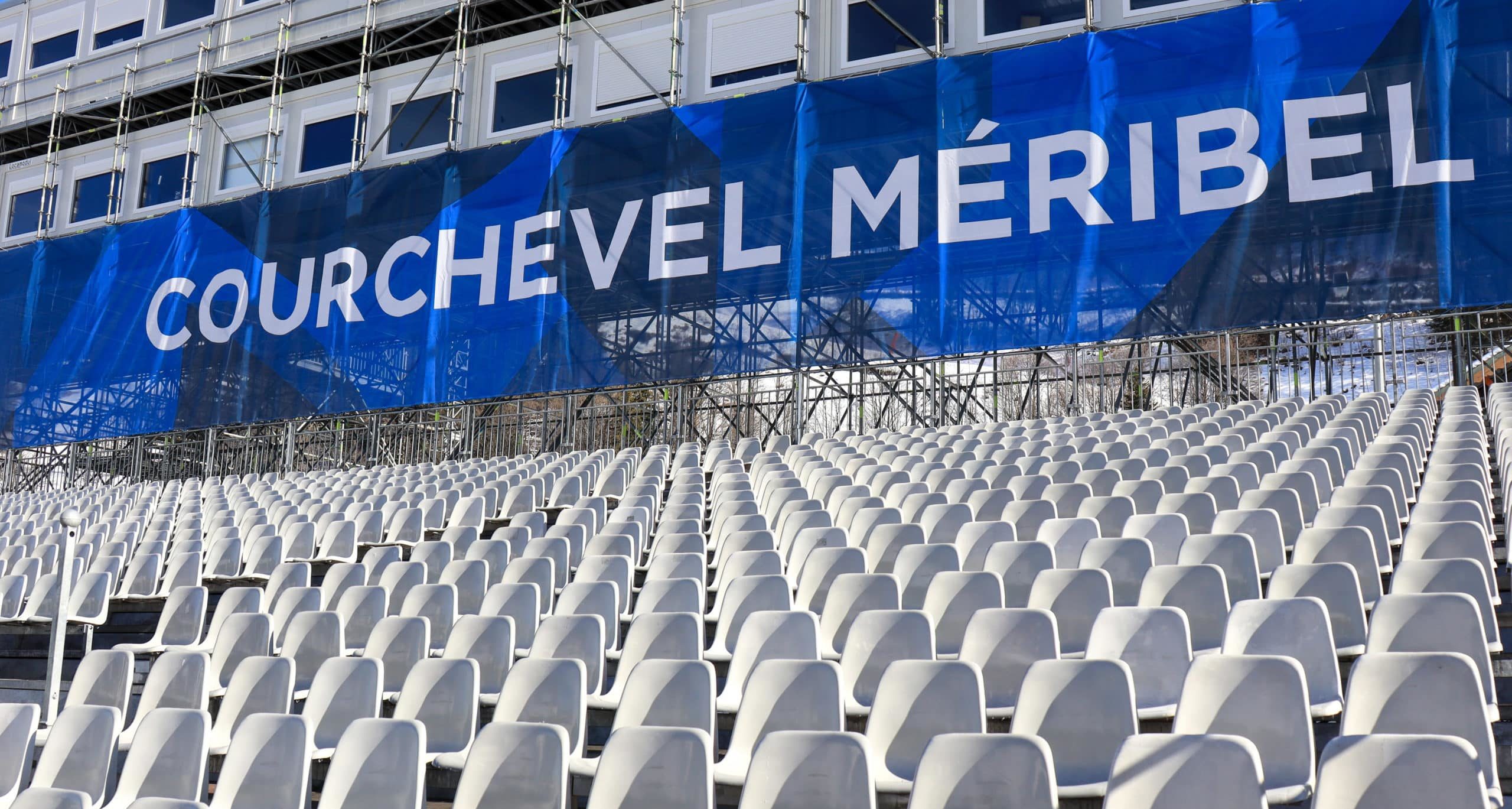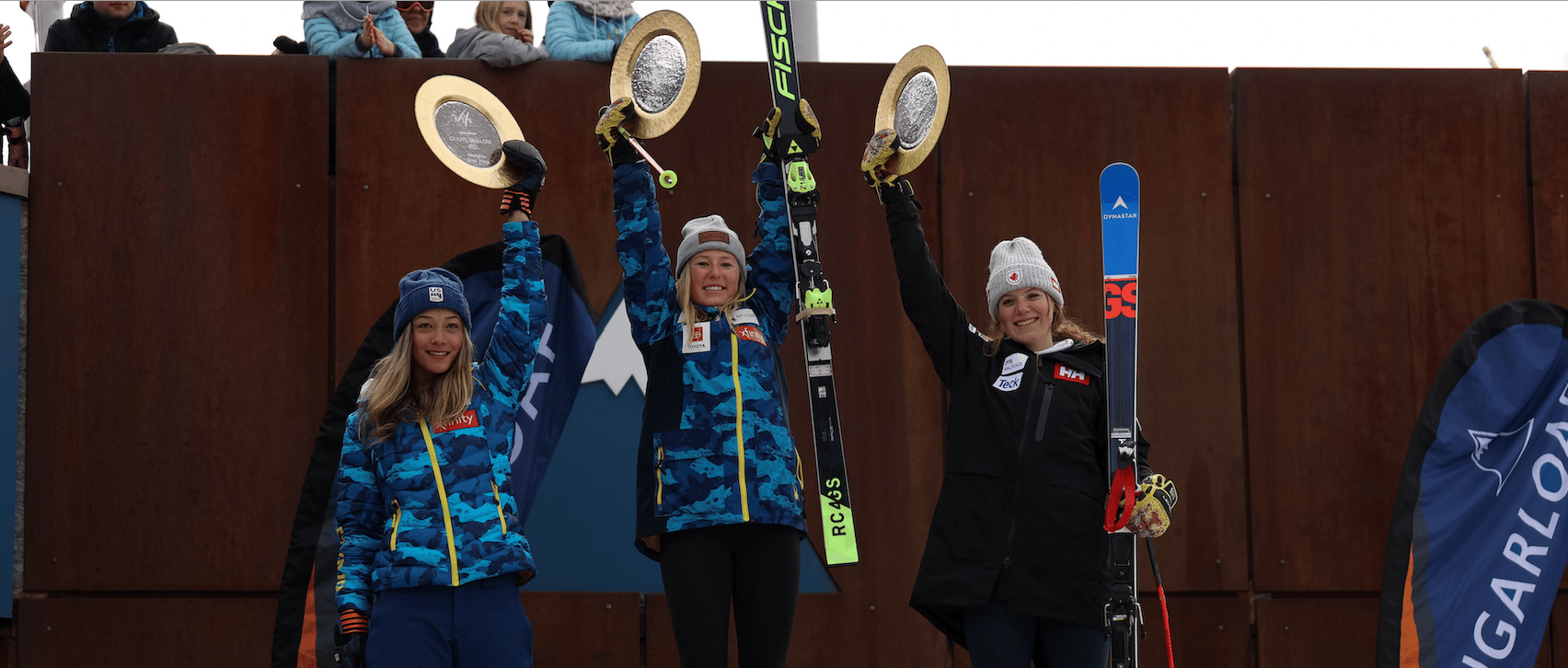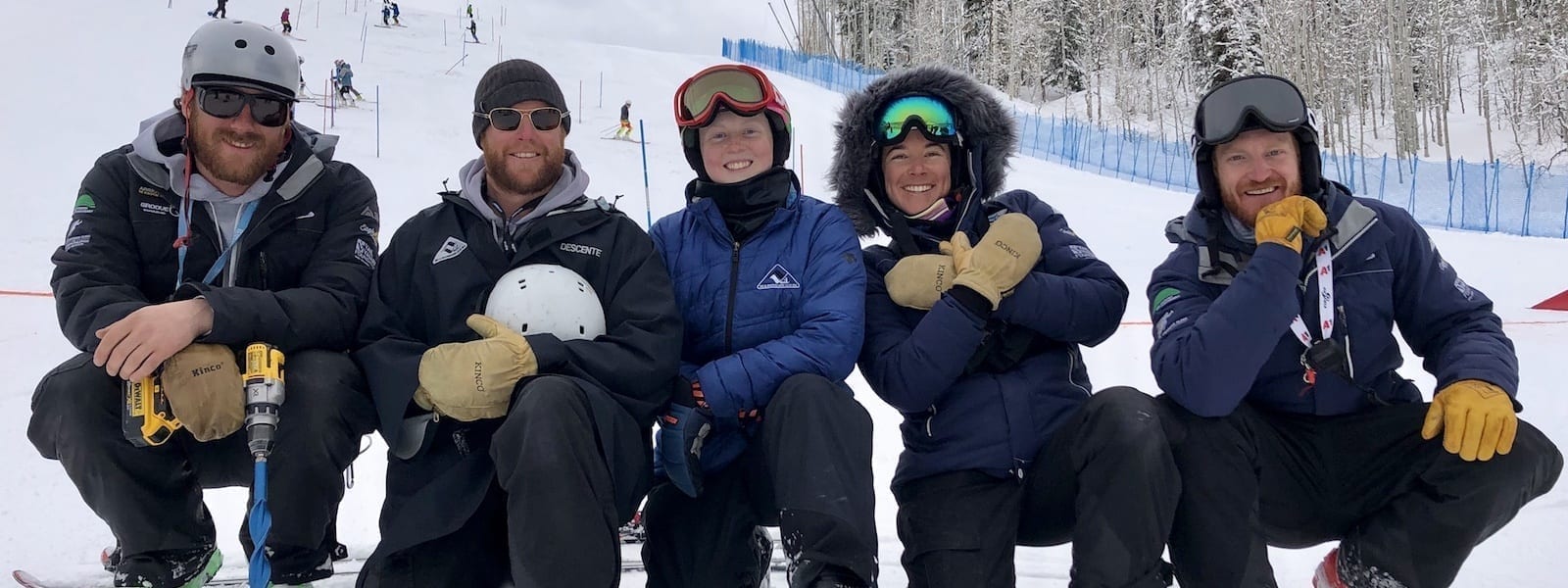Inside the Ski Racing Mind: Motivation to Succeed
 Motivation is the foundation of all of your efforts to achieve your ski-racing goals. Without your desire and determination to become a better ski racer, everything else you do won’t matter. It’s simple. To become the best ski racer you can be, you must be motivated to do what it takes to maximize your ability.
Motivation is the foundation of all of your efforts to achieve your ski-racing goals. Without your desire and determination to become a better ski racer, everything else you do won’t matter. It’s simple. To become the best ski racer you can be, you must be motivated to do what it takes to maximize your ability.
Motivation, simply defined, is the ability to initiate and persist at a task. In other words, you must want to begin the process of developing as a ski racer and you must be willing to maintain your efforts until you have achieved your goals. Motivation in ski racing is so important because you must be willing to work hard in the face of fatigue, boredom, pain, and the desire to do other things. Motivation will impact everything that influences your ski racing: physical conditioning, technical and tactical training, equipment preparation, mental readiness, and general lifestyle including sleep, diet, school or work, and relationships.
The reason motivation is so important is that it is the only contributor to your ski racing over which you have control. There are three things that affect how well you ski. First, your innate ability, which includes your inborn physical, technical, and mental capabilities. Because ability is genetic, you can’t change your ability so it is outside of your control.
Second, the difficulty of the competition influences how well you ski. Contributors to difficulty include the level of competition, weather, terrain, and snow conditions. You have no control over any of these factors.
Finally, motivation is the only contributor to your ski racing over which you have direct control. Motivation will impact how well you ski at two levels. First, motivation will determine how much time and effort you put into your physical, technical, tactical, and mental preparations as well as your equipment. Research has shown that those who devote the most time and are the most focused on their efforts will be the most successful. Motivation will also influence how well you ski on race day. If you’re racing against others of nearly equal skill, it will not be ability that will determine who is the most successful. Rather, it will be the racer who is the most prepared on the day of the race, and who doesn’t give up no matter how difficult the conditions. In other words, the racer who wants it the most.
Effort = Goals?
When I speak to groups of young racers, I always ask how many have big goals, like making the U.S. Ski Team or going to the Olympics. About 90% raise their hands. I then ask how many are doing everything they possibly can to achieve their goals. Only one or two tentative hands go up. What this tells me is that there is often a big gap between the goals racers have and the effort they are putting into those goals. It’s easy to say that you want to be a great racer; it is much more difficult to put in the effort necessary to become great. If you have this kind of disconnect, you have two choices. You can either lower goals to match your effort or you can raise your effort to match your goals. There is no right answer. But if you’re truly motivated to be successful, you better make sure you’re doing the work necessary to achieve your goals.
The Grind
No matter how much you may love ski racing, you are likely to arrive at a point in training, either dryland or on snow, when it is no longer fun. I call this the Grind, which starts when it gets tiring, painful, and tedious, when it is brutally cold or the course is really chewed  up. The Grind is also the point at which it really counts. The Grind is what separates ski racers who achieve their goals from those who don’t. Many racers when they reach the Grind either ease up or give up because it’s just too darned hard. But truly motivated racers reach the Grind and keep on going.
up. The Grind is also the point at which it really counts. The Grind is what separates ski racers who achieve their goals from those who don’t. Many racers when they reach the Grind either ease up or give up because it’s just too darned hard. But truly motivated racers reach the Grind and keep on going.
Many sport psychologists will say that you have to love the Grind. I say that, except for a very few hyper-motivated racers, love isn’t in the cards because there’s not much to love when you are exhausted or hurting. But how you respond to the Grind lies along a continuum. As I just mentioned, loving the Grind is rare. At the other end of the continuum is “I hate the Grind.” If you feel this way, you are likely going to lose your motivation and give up. I suggest that you neither love nor hate the Grind, just accept it as part of the deal in striving toward your goals. The Grind may not be very enjoyable, but what feels even worse is failing to achieve your goals because you didn’t work hard enough. And what really feels good is seeing your hard work pay off with success.
Signs of Low Motivation
There are several signs of low motivation:
• A lack of desire to train as much as you should.
• Less than 100% effort in training.
• Skipping or shortening training.
• Effort that is inconsistent with your goals.
Three D’s of Prime Motivation
I define Prime Motivation as putting 100% of your time, effort, energy, and focus into all aspects of your ski racing. It involves doing everything possible to become the best ski racer you can be.
Prime motivation begins with what I call the three D’s. The first D stands for direction. Before you can attain prime motivation, you must first consider the different directions you can go in your ski racing. You have three choices: stop racing completely, continue at your current level, or kick it up another notch and strive to be the very best racer you can be.
The second D represents decision. With these three choices of direction, you must select one direction in which to go. None of these directions is necessarily right or wrong, better or worse, they’re simply your options. Your choice will dictate the amount of time and effort you will put into your racing and how good a racer you will ultimately become.
The third D stands for dedication. Once you’ve made your decision, you must dedicate yourself to it. If your decision is to become the best ski racer you can be, then this last step, dedication, will determine whether you have prime motivation. Your decision to be your best and your dedication to your ski racing must be a top priority. Only by being completely dedicated to your direction and decision will you ensure that you have prime motivation.
Developing Prime Motivation
Set goals. There are few things more rewarding and motivating than setting a goal, putting effort toward the goal, and achieving the goal. The sense of accomplishment and validation of the effort makes you feel good and motivates you to strive higher. It’s valuable to establish clear goals of what you want to accomplish in your ski racing and how you will achieve those goals. Seeing that your hard work leads to progress and results should motivate you further to realize your goals.
Focus on your long-term goals. To be your best, you have to put a lot of time and effort into your ski racing. But, as I noted above, there are going to be times-the Grind-when you don’t feel that motivated.
When you feel this way, focus on your long-term goals. Remind yourself why you’re working so hard. Imagine exactly what you want to accomplish and tell yourself that the only way you’ll be able to reach your goals is to continue to work hard.
Try to generate the feelings of fulfillment and pride that you will experience when you reach your goals. This will distract you from the immediate discomfort of the Grind, focus you on what you want to achieve, and generate positive thoughts and emotions that will keep you working hard through the Grin
d.
Have a training partner. It’s difficult to be highly motivated all of the time on your own. There are going to be some days when you just don’t feel like getting out there. Also, no matter how hard you push yourself, you will work that much harder if you have someone pushing you. That someone can be a coach, personal trainer, or parent. But the best person to have is a regular training partner, someone at about your level of ability and with similar goals. You can work together to accomplish your goals. The chances are on any given day that one of you will be motivated. Even if you’re not very psyched to train on a particular day, you will still put in the time and effort because your partner is counting on you.
Focus on greatest competitor. Another way to keep yourself motivated is to focus on your greatest competitor. Identify who your biggest competition is and put his or her name or photo where you can see it every day. Ask yourself, “Am I working as hard as him/her?” Remember that only by working your hardest will you have a chance to overcome your greatest competitor.
Motivational cues. A big part of staying motivated involves generating positive emotions associated with your efforts and achieving your goals. A way to generate those feelings is with motivational cues such as inspirational phrases and photographs. If you come across a quote or a picture that moves you, place it where you can see it regularly such as in your bedroom, on your refrigerator door, or in your locker. Look at it periodically and allow yourself to experience the emotions it creates in you. These reminders and the emotions associated with them will inspire and motivate you to continue to work hard toward your goals.
Daily questions. Every day, you should ask yourself two questions. When you get up in the morning, ask, “What can I do today to become the best ski racer I can be?” and before you go to sleep, ask, “Did I do everything possible today to become the best ski racer I can be?” These two questions will remind you daily of what your goals are and will challenge you to be motivated to become your best.
The heart of motivation. A final point about motivation. The techniques I’ve just described are effective in increasing your short-term motivation. Motivation, though, is not something that can be given to you. Rather, motivation must ultimately come from within. You must simply want to ski race and achieve your goals; you just have to want it really bad.
Dr. Jim Taylor drjimtaylor.com,
knows the psychology of ski racing! He competed internationally for
Burke Mtn. Academy, Middlebury College, and the University of Colorado.
For the past 25 years, Dr. Jim has worked with many of America’s leading
junior race programs as well as World Cup competitors from many
countries. He is the author ofPrime Ski Racing Triumph of the Racer’s Mind. Dr. Jim is also the author of two parenting books and speaks regularly to parents, students, and educators around the U.S..
Click here to go to the Inside the Ski Racing Mind archives.





















